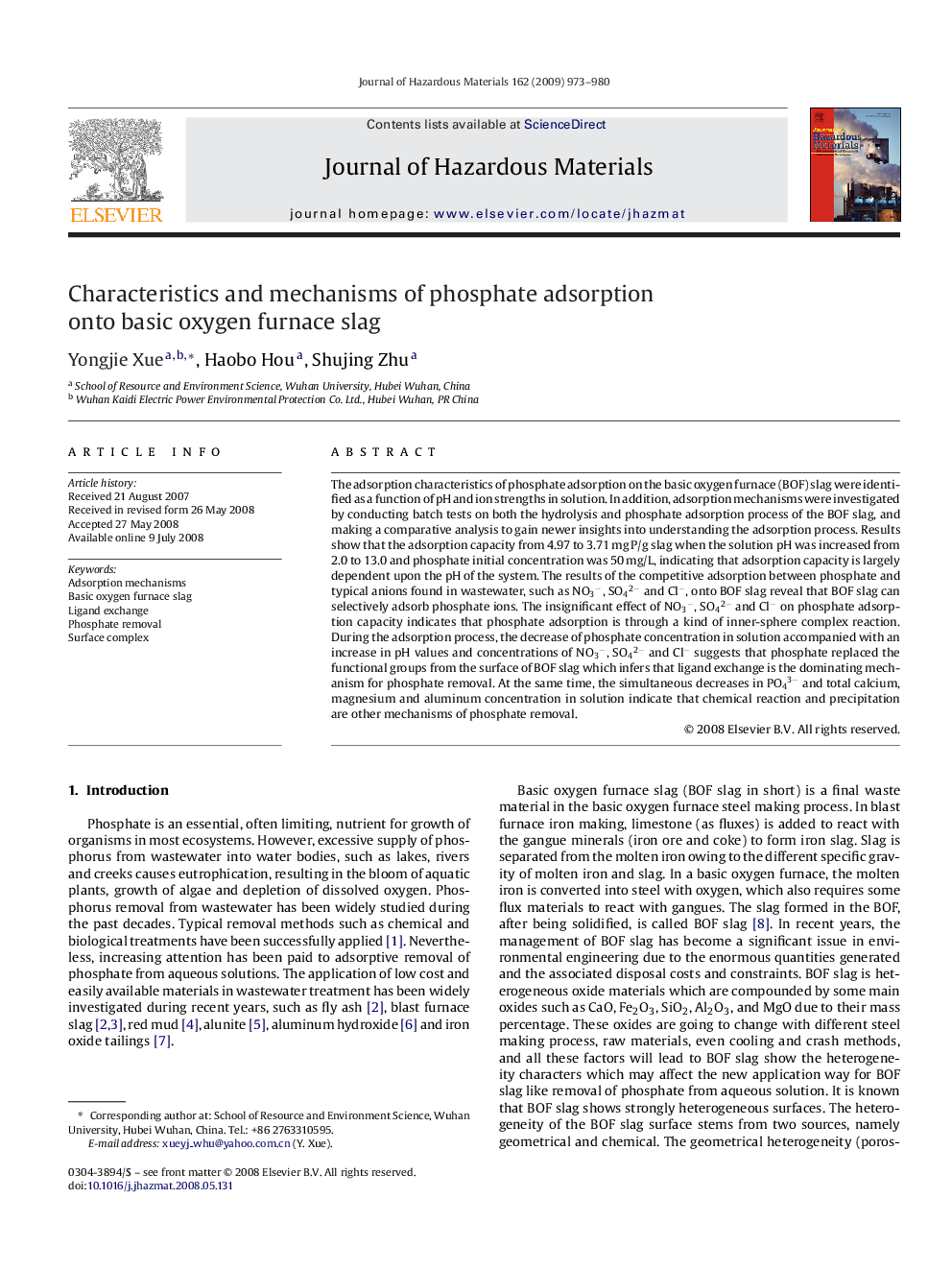| Article ID | Journal | Published Year | Pages | File Type |
|---|---|---|---|---|
| 582389 | Journal of Hazardous Materials | 2009 | 8 Pages |
Abstract
The adsorption characteristics of phosphate adsorption on the basic oxygen furnace (BOF) slag were identified as a function of pH and ion strengths in solution. In addition, adsorption mechanisms were investigated by conducting batch tests on both the hydrolysis and phosphate adsorption process of the BOF slag, and making a comparative analysis to gain newer insights into understanding the adsorption process. Results show that the adsorption capacity from 4.97 to 3.71 mg P/g slag when the solution pH was increased from 2.0 to 13.0 and phosphate initial concentration was 50 mg/L, indicating that adsorption capacity is largely dependent upon the pH of the system. The results of the competitive adsorption between phosphate and typical anions found in wastewater, such as NO3â, SO42â and Clâ, onto BOF slag reveal that BOF slag can selectively adsorb phosphate ions. The insignificant effect of NO3â, SO42â and Clâ on phosphate adsorption capacity indicates that phosphate adsorption is through a kind of inner-sphere complex reaction. During the adsorption process, the decrease of phosphate concentration in solution accompanied with an increase in pH values and concentrations of NO3â, SO42â and Clâ suggests that phosphate replaced the functional groups from the surface of BOF slag which infers that ligand exchange is the dominating mechanism for phosphate removal. At the same time, the simultaneous decreases in PO43â and total calcium, magnesium and aluminum concentration in solution indicate that chemical reaction and precipitation are other mechanisms of phosphate removal.
Keywords
Related Topics
Physical Sciences and Engineering
Chemical Engineering
Chemical Health and Safety
Authors
Yongjie Xue, Haobo Hou, Shujing Zhu,
